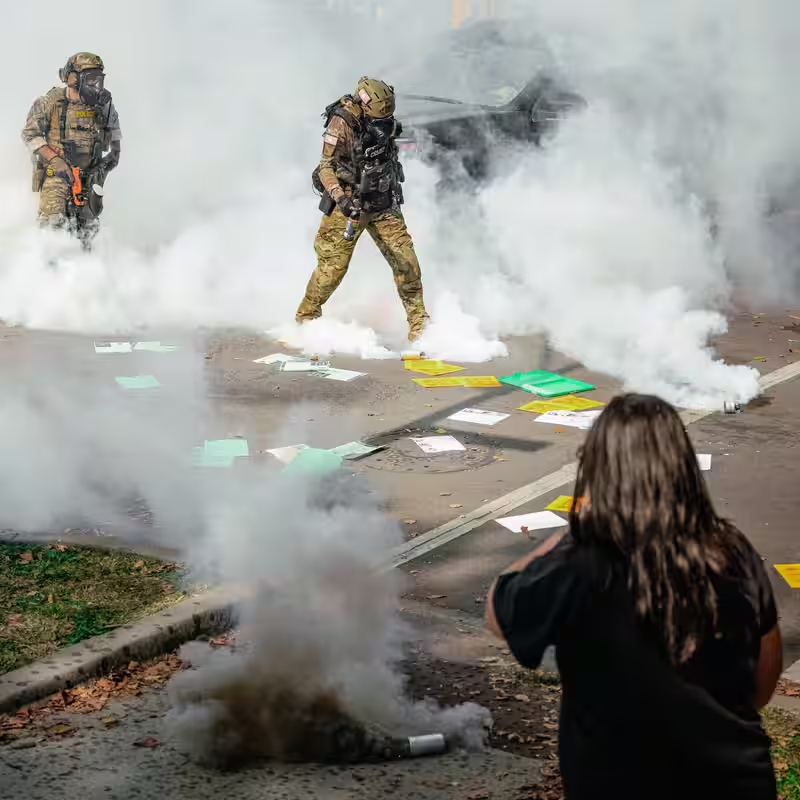Table of Contents
- Federal Judge Takes On Trump Immigration Operation
- Tear Gas Used Despite Court Order
- Inside ‘Operation Midway Blitz’
- Rights, Cameras, and Judicial Authority
- Sources
Trump Immigration Crackdown Faces Judicial Reckoning in Chicago
A federal judge has summoned top officials from the Trump administration’s immigration enforcement operation to appear in court Monday, demanding answers about their use of tear gas against protesters, journalists, and even clergy in Chicago neighborhoods.
U.S. District Judge Sara L. Ellis, appointed by President Barack Obama, issued a temporary order on October 9 explicitly barring federal agents from deploying tear gas and other chemical munitions against peaceful demonstrators in the Chicago area. Yet, multiple videos and eyewitness accounts show the ban was ignored—prompting Judge Ellis to take the rare step of calling operational leaders into her courtroom for direct questioning.
Tear Gas Deployed in Albany Park and South Side
Two incidents in particular have drawn the court’s scrutiny:
- October 12 – Albany Park: Federal agents stopped a local resident during a routine immigration operation. A crowd gathered in response, and without clear provocation, agents unleashed tear gas into the residential street.
- October 14 – South Side: After a car crash involving federal vehicles, a group of onlookers assembled. Agents again fired tear gas into the crowd, including bystanders and reporters.
“I don’t live in a cave,” Judge Ellis told attorneys last week. “I’m seriously concerned that my orders aren’t being followed.”
Inside Operation Midway Blitz
The crackdown, dubbed Operation Midway Blitz, began in early September 2025 and targets undocumented immigrants in the Chicago metro area. But its aggressive tactics—camouflage uniforms, unmarked vehicles, and rapid raids—have sparked widespread protests and accusations of militarized overreach.
Kyle C. Harvick, deputy incident commander for Customs and Border Protection (CBP) and a key architect of the operation, is expected to testify Monday. Plaintiffs in the ongoing lawsuit allege that agents routinely use pepper balls, pepper spray, and tear gas with little warning—even against non-threatening individuals.
Rights, Cameras, and the Limits of Power
In a move underscoring her frustration, Judge Ellis issued a new directive on Friday: all federal agents involved in immigration enforcement in Chicago must activate body cameras during arrests and public interactions. The government objected, citing logistical burdens, but the judge overruled them.
Legal experts say this case tests the boundaries of executive power versus judicial oversight. “When a court issues an injunction, it’s not a suggestion—it’s the law,” said Professor Elena Martinez of Northwestern Law School. “Repeated violations risk contempt charges or even personal liability for officials.”
For Chicago residents, the stakes are deeply personal. “They’re treating our neighborhoods like war zones,” said Maria Gonzalez, an Albany Park community organizer. “We just want accountability.”
As Monday’s hearing approaches, all eyes are on whether the Trump administration will comply—or escalate its defiance.




